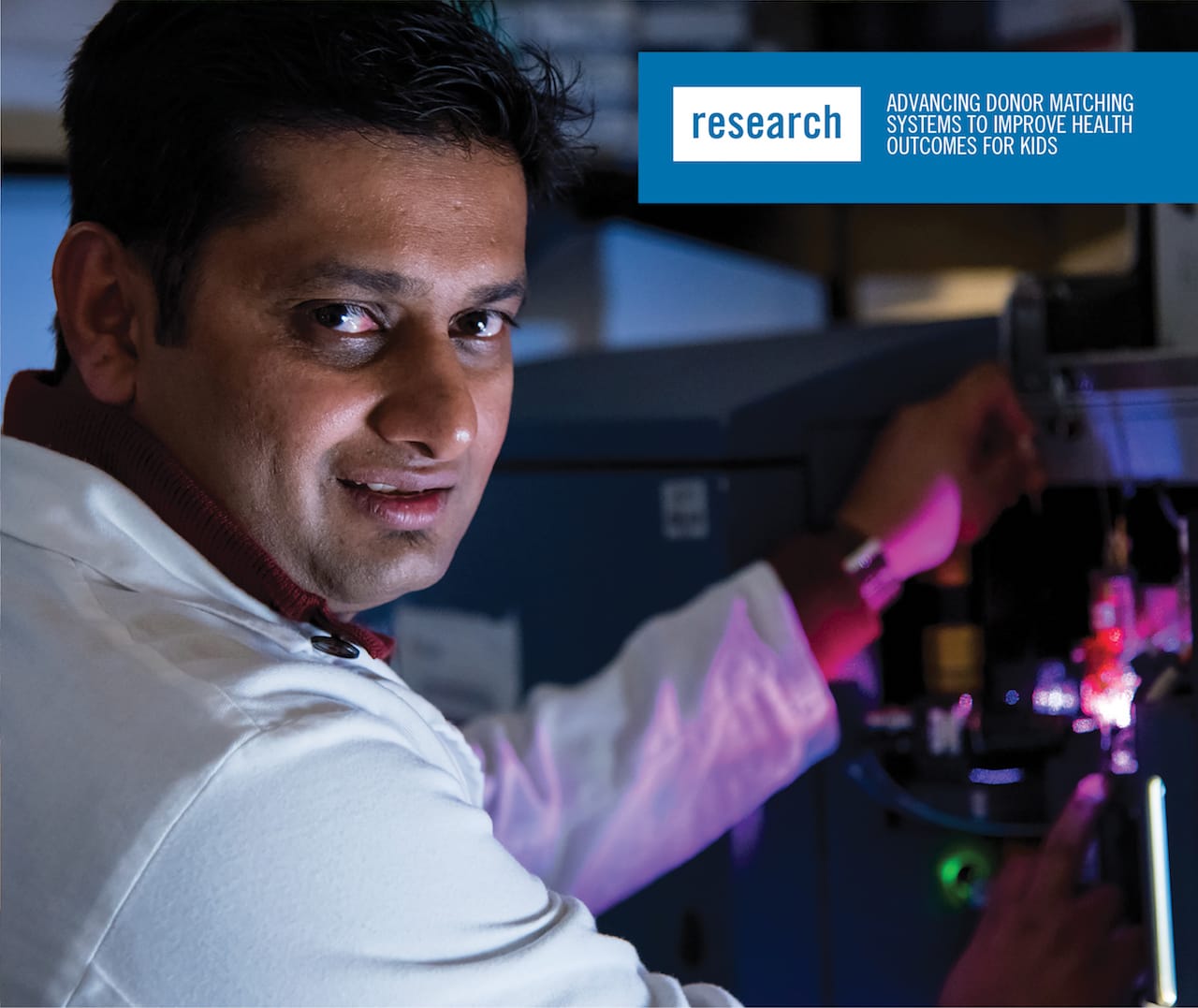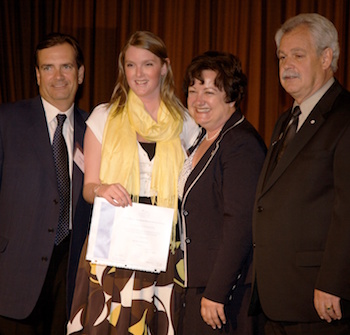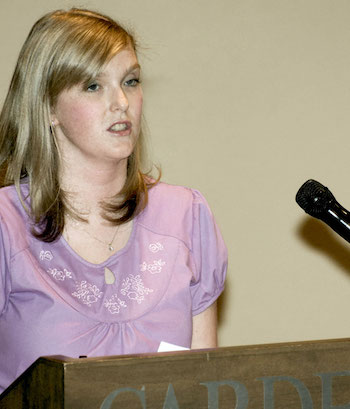
Advancing Donor Matching Systems To Improve Health Outcomes For Kids
As her friends get on with their lives and careers, Laura Cuthbertson is caught in a revolving door of serious illnesses and drug side-effects. Laura has chronic graft versus host disease, related to the blood and marrow transplant she received as a teenager while being treated for high-risk leukemia. There is no end in sight for Laura’s condition and no

cure on the horizon. But with your support, Dr. Faisal and his research team may be able to stop the chances of graft versus host disease from ever happening in the first place.
Laura is a 28-year-old nurse on long-term disability. She has been on steroids for over half of her life and will likely be on them for the rest of it. These powerful drugs, which she takes to manage the graft versus host disease (GvHD), have caused osteoporosis, high cholesterol and pancreatitis.
Currently an out-patient at the Foothills Hospital, receiving an experimental therapy three to five times per week for GvHD, Laura is also a regular at the Chronic Pain Clinic. She also sees a psychiatrist and psychologist regularly to help her manage the pain.
“It’s an ongoing experiment to see what works and what doesn’t,” says Laura. “Some days, I feel like I’m falling apart. It’s hard to hold it together emotionally, when you feel so lousy physically.”
GvHD is a serious health issue in patients who receive blood and marrow transplantation, a treatment commonly known as BMT, which frequently cures cancers and other disorders of blood. GvHD occurs when donor-derived blood cells in a patient see the patient’s body as foreign and so triggers an immune response leading to various complications. For Laura, GvHD manifests itself in extremely painful sores throughout her mouth and esophagus.

“About 25 to 40 per cent of adult and pediatric BMT recipients are diagnosed with GvHD,” says Dr. Faisal Khan, an associate professor in the departments of pediatrics; and pathology and laboratory medicine at the University of Calgary’s Cumming School of Medicine. “About 10 per cent of these patients die from GvHD and another 25 per cent suffer long-term complications and poor quality of life. That’s far too many.”
Working with the Tissue Typing Laboratory of Calgary Laboratory Services, Faisal and his research team at the University of Calgary are trying to reduce the risk of GvHD for young people like Laura by improving the screening and matching process of BMT donors.
Traditionally, health care professionals have matched donors and patients based on five immunity-related genes to determine whether a donor is compatible and suitable for the BMT. A high incidence of GvHD, however; suggests that matching by these five immunity-related genes is insufficient. Over the last four years, Faisal’s lab has identified distinct genetic variants and signatures, including the matching of 14 immune function genes, which may improve screening and outcomes for patients who already share the first five immunity-related genes with the donor.
“Our research has shown that matching these 14 genes in donors and patients reduces the risk of GvHD twofold, compared to transplants where these 14 genes are not matched,” says Faisal.
If all goes well, within the next year or two, Faisal and his research team will be ready to launch a clinical trial to evaluate the new screening and matching system. But even at this stage, their research findings look promising. Faisal’s research was named the most clinically relevant research in 2014 by the American Society for Histocompatibility and Immunogenetics, the governing body for all tissue typing laboratory testing facilities in North America. In 2013 and 2015, the findings were selected for a prestigious American Society of Hematology abstract achievement award.
The hope is that the new screening process will offer doctors superior immuno-genetic information, so they are able to more accurately predict and pre-empt poor outcomes in BMT patients.
“The perfect scenario is always to find a perfectly matched donor,” says Faisal, “but in situations where an ideal donor isn’t available, at least the health care team will have the information they need to anticipate the outcomes. They’ll be in a better position to predict adverse effects, so they can introduce more rigorous monitoring of patients earlier and, if need be, administer pre-emptive treatments sooner.”

The immuno-genetic information gained through the new screening process may also help researchers and doctors predict which drugs will be most effective in enlisting the patient’s own immune system to help attack and kill the cancer.
With Faisal’s research findings, we may one day see fewer BMT-related complications and health issues. It may lead to fewer relapses and reduced risk of GvHD for young people like Laura. The hope is that ultimately it will mean fewer deaths and healthier, happier lives after blood and marrow transplantation.
Thank you for supporting Experimental and Applied Therapeutics research at the Childhood Cancer Research Program. You are helping researchers like Dr. Faisal Khan improve outcomes for BMT patients offering them hope for a healthy future.
